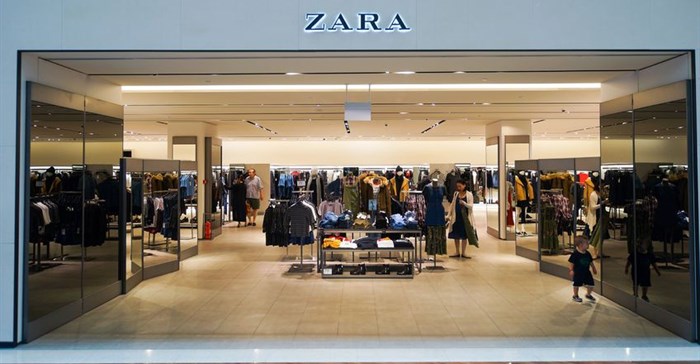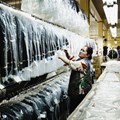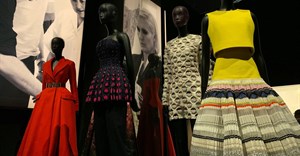Subscribe & Follow
Trending
Jobs
- Sales Assistant Cape Town
- Assistant Store Manager - Retail Pretoria
- Cashiers and Shop Assistants Cape Town
- Admin/Operations Assistant Pretoria
Fast fashion lies: Will they really change their ways in a climate crisis?

Zara’s fast-fashion model has been so successful it has inspired an entire industry to shift – churning out an unprecedented number of fashion garments year-round.
We live in an era of hyper-consumption in the middle of a climate crisis.
Clothing production doubled from 2000 to 2014. The average consumer bought 60% more clothing in 2014 than in 2000, but kept each garment half as long. Apparel consumption is projected to to rise by 63 per cent in the next 10 years. And less than one per cent of all clothing produced globally is recycled.
With production numbers like these, can any fast-fashion retailer claim sustainability?
Fast fashion is not eco-friendly
The fast-fashion business model itself is the very antithesis to sustainability.
Some ideas that have been presented by fast-fashion companies include recycling. But even if garments are collected in-store, the capabilities to recycle clothing at the scale needed for current production rates do not exist. It’s also typically more energy-intensive to recycle than to produce new products.
Another concept, the one put forth recently by Zara, is to use only sustainable fabrics. But switching to sustainable fabrics while producing fashion clothing under the same model will not make any fast-fashion retailer sustainable.

There is no such thing as a 100 per cent sustainable fabric. Fabrics require a tremendous amount of energy and natural resources to produce. Sustainable fabrics are just less harmful by reducing their environmental impact.
I spend a lot of time reading the corporate social responsibility reports of larger brands and interviewing micro-to-small sized enterprises to see how they approach sustainability. The largest significant difference between the two entities is culture.
Small brands focus on creating a culture of sustainability by producing less from the onset. They use strategies like producing made-to-order, so they are not making more than what is sold. They do this because waste is one of their biggest concerns. They also design clothing to be of the highest quality, ensuring durability and longevity, so clothes last a long time in your wardrobe. They will also repair your clothing so that you may keep it longer.
The most significant difference is that most small brands are opting to work under an “anti-fashion calendar.” They deliberately chose not to follow the intense seasonal calendar that fashion functions under. Instead, they produce as needed. This is the opposite of how large companies function.
Large global corporate retailers are not seeking to change their fundamental business model or create cultures of sustainability. That would require re-working their entire business structure.
Corporate social irresponsibility
The fast-fashion growth model used by all large companies is predicated on limitless growth and disposable consumption.
Corporate brands and retailers provide statistics about their environmental impact reductions within their supply chains. Unlike annual financial reports, corporate social responsibility (CSR) reports are voluntary and not verified externally. Also, the way they measure their improvements is not consistent or standardized. Therefore, consumers can’t compare one company to another without doing some wizard math.
Annual financial reports usually include ambitious goals to grow and expand. For example, H&M opened up 145 new stores this year and has expanded into four new markets: Ukraine, Kuwait, Saudi Arabia and United Arab Emirates (UAE).
Inditex, Zara’s parent company, expects to open 300 new stores this year and launch online sales in Dubai, Egypt, Indonesia, Israel, Lebanon, Morocco, Saudi Arabia, Serbia and UAE.

Fast fashion is a “grow or die” business. And fast fashion continues to export this western consumerism into the Global South: this could have disastrous consequences. This is the paradox at the heart of western consumerist culture and one that goes beyond fast-fashion industry. Neoliberal capitalist economies require continuous consumption and define success through growth – concepts at odds with sustainability. Business growth must be decoupled from resource use.
The global population is set to grow by another two billion people in the next 30 years. To make a dent in the climate crisis, we have to cut emissions by more than 55% in the next 10 years.
The current carbon footprint of the fashion industry is over eight per cent of total global greenhouse gas emissions, larger than all international travel. Therefore, to achieve the United Nations Sustainable Development Goals, including the 2C global temperature target, the fashion industry must play an active role in changing how they operate, source, manufacture, distribute and approach the market.
It’s not as simple switching out current textiles or packaging for more sustainable versions. Solutions to sustainability must include cultural change.
How many wears does your clothing give you?
Even when a garment is produced using all sustainable materials, there are still many problems. Cheap costs and speedy production are why we still have labour issues like sweatshop conditions.
Zara has 1,800 suppliers in its supply-chain but does not disclose how often it audits individual suppliers per year to ensure compliance. If a garment is made to withstand only a couple months of wear – it is a massive waste of resources to produce that garment.

Fast fashion doesn’t nudge consumers towards more responsible consumption behaviours because that would ultimately hurt their bottom line.
I would have more faith in the sustainability initiatives by large fashion companies if they started to introduce alternative sustainable business model practices.
One small step could be to offer repair or tailoring services. Tailoring creates clothes that fit impeccably, subsequently increasing their emotional value. I believe that when garments fit well and are flattering to our body, we love them, and we keep them longer.
For the benefit of the earth and humanity, large brands need to look at how to move away from their continuous offerings of weekly new products. If these kind of changes were to occur, I would start to believe Zara and other fashion brands had good intentions to curb climate change.
![]()
Source: The Conversation Africa

The Conversation Africa is an independent source of news and views from the academic and research community. Its aim is to promote better understanding of current affairs and complex issues, and allow for a better quality of public discourse and conversation.
Go to: https://theconversation.com/africa





















